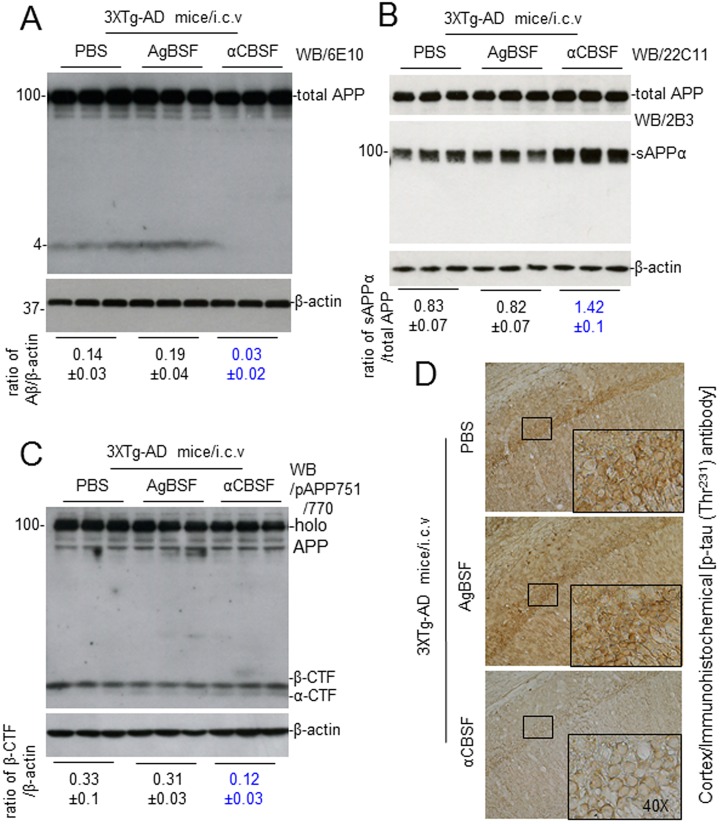Fig. 8.
Cord blood serum–specific fraction with enhanced α-secretase catalytic activity (αCBSF) promotes amyloid precursor protein (APP) α-secretase processing in vivo. 3xTg-AD female mice at 4 mo of age were treated with αCBSF, aged blood serum fraction with enhanced α-secretase activity (0.5 μg/mouse; n = 6), or phosphate-buffered saline control (1 μL/mouse; n = 5 female) by i.c.v. injection and euthanized 72 h later. Mouse brain homogenates were then prepared from the right half of the brain (noninjection side). (A) Western blot (WB) analysis using Aβ1-17 antibody (6E10) shows total APP and Aβ species. (B) WB analysis using a soluble amyloid precursor protein α (sAPPα)-specific antibody (2B3) or anti-N-terminal APP antibody (22C11) shows sAPPα or total APP, respectively. (C) WB analysis using pAb751/770 shows full-length APP (holo APP) and 2 bands corresponding to β-carboxy terminal fragment and α-C-terminal fragment. (D) Mouse brain cortices from each treatment group were stained with anti-phospho-tau (p-tau [Thr231]) antibody. In addition, percentages (p-tau [Thr231] positive area/total area; mean ± SD) of anti-p-tau antibody positive cells were quantified by ImageJ (1.47v, NIH, USA) analysis (**P < 0.005; data not shown). WB data presented here are representative of results obtained from 5 to 6 female mice per group.

